Thomas R. Kurfess9780849318047, 0-8493-1804-1
Table of contents :
Robotics and Automation Handbook……Page 1
Preface……Page 3
The Editor……Page 4
Contributors……Page 5
Contents……Page 7
1.1.1 The Influence of Mythology……Page 9
1.1.3 Inventions Leading to Robotics……Page 10
1.1.5 First Use of the Word……Page 11
1.1.6 The Birth of the Industrial Robot……Page 12
1.1.7 Robotics in Research Laboratories……Page 13
1.1.8 Robotics in Industry……Page 15
1.1.9 Space Exploration……Page 16
1.1.10 Military and Law Enforcement Applications……Page 17
1.1.11 Medical Applications……Page 18
1.1.12 Other Applications and Frontiers of Robotics……Page 19
2.1 Rotations in Three Dimensions……Page 21
2.1.1 Rules for Composing Rotations……Page 23
2.1.3 The Matrix Exponential……Page 24
2.2.1 Composition of Motions……Page 25
2.3.1 Homogeneous Transformation Matrices……Page 26
2.3.2 The Denavit-Hartenberg Parameters in Robotics……Page 27
2.4.1 AngularVelocity and Jacobians Associated with Parametrized Rotations……Page 28
2.4.2 The Jacobians for ZXZ Euler Angles……Page 30
2.4.3 Infinitesimal Rigid-Body Motions……Page 31
References……Page 32
3.2 Preliminaries……Page 34
3.2.1 Existence and Uniqueness of Solutions……Page 35
3.2.2 Notation and Nomenclature……Page 36
3.3.1 Reduction of Inverse Kinematics to Subproblems……Page 37
3.3.1.1 Inverse Kinematics for Two Examples via Subproblems……Page 38
3.3.2 Pieper’s Solution……Page 40
3.3.2.1 Simplifying Case Number 1: a1 = 0……Page 42
3.3.2.3 General Case when a1 = 0 and α1 = 0……Page 43
3.3.3 Example……Page 44
3.4 Numerical Techniques……Page 46
3.4.2 Inverse Kinematics Solution Using Newton’s Method……Page 47
Appendix A: Theorems Relating to Newton’s Method……Page 50
Appendix B: Implementation of Newton’s Method……Page 51
B.1 File ‘‘inversekinematics.c’’……Page 52
B.2 File ‘‘computejacobian.c’’……Page 56
B.3 File ‘‘forwardkinematics.c’’……Page 57
B.4 File ‘‘homogeneoustransformation.c’’……Page 58
B.5 File ‘‘matrixinverse.c’’……Page 59
B.6 File ‘‘matrixproduct.c’’……Page 61
B.8 File ‘‘dh.dat’’……Page 62
References……Page 63
4.1.2 Background……Page 64
4.2.1 Newton-Euler Equations……Page 65
4.2.2 Force and Torque Balance on an Isolated Link……Page 66
4.2.3 Two-Link Robot Example……Page 67
4.2.4 Closed-Form Equations……Page 70
4.3.3 Spatial Dynamics……Page 71
References……Page 72
5.2 Preliminaries……Page 74
5.2.1 Velocities and Forces……Page 76
5.2.2 Kinematics of Serial Linkages……Page 77
5.3.1 Inertial Properties of a Rigid Body……Page 79
5.3.2 Euler-Lagrange Equations for Rigid Linkages……Page 80
5.3.3 Generalized Force Computation……Page 81
5.3.4 Geometric Interpretation……Page 83
5.4 Constrained Systems……Page 84
5.4.1 Geometric Interpretation……Page 85
5.5 Impact Equations……Page 86
5.7 Conclusion……Page 87
References……Page 88
6.1 Introduction……Page 90
6.2 The Essence of Kane’s Method……Page 92
6.3 Two DOF Planar Robot with Two Revolute Joints……Page 93
6.3.1 Preliminaries……Page 94
6.3.4 Partial Velocities……Page 95
6.3.7 Generalized Active Forces……Page 96
6.4 Two-DOF Planar Robot with One Revolute Joint and One Prismatic Joint……Page 97
6.4.2 Generalized Coordinates and Speeds……Page 98
6.4.3 Velocities……Page 99
6.4.5 Accelerations……Page 100
6.4.6 Generalized Inertia Forces……Page 101
6.5.1 Linearized Equations……Page 102
6.5.2 Systems Subject to Constraints……Page 103
6.5.3.1 Preliminaries……Page 105
6.5.3.2 Kinematics……Page 107
6.6 Kane’s Equations in the Robotics Literature……Page 111
6.7 Commercially Available Software Packages Related to Kane’s Method……Page 114
6.7.2 Pro/ENGINEER Simulation (formerly Pro/MECHANICA)……Page 115
6.7.4 ADAMS……Page 116
6.7.5 Working Model……Page 117
References……Page 118
7.1 Introduction……Page 121
7.2 Newton’s Law and the Covariant Derivative……Page 122
7.3 Newton’s Law in a Constrained Space……Page 125
7.4 Euler’s Equations and the Covariant Derivative……Page 128
7.5 Example 1: Euler’s Equations for a Rigid Body……Page 131
7.6 The Equations of Motion of a Rigid Body……Page 133
7.7 Constraint Forces and Torques between Interacting Bodies……Page 135
7.8 Example 2: Double Pendulum in the Plane……Page 136
7.9 Including Forces from Friction and from Nonholonomic Constraints……Page 138
7.10 Example 3: The Dynamics of the Interaction of a Disk and a Link……Page 139
7.11 Example 4: Including Friction in the Dynamics……Page 141
7.12 Conclusions……Page 142
References……Page 143
8.2 D-H Parameters……Page 146
8.3 Algorithm for Determining the Homogenous Transformation Matrix, A.n……Page 151
Example 8.1……Page 153
Example 8.2: The SCARA Robot……Page 156
Example 8.3: The Stanford Arm……Page 158
Example 8.4: The Mitsubishi PA-10 Robot Arm……Page 160
Example 8.5: The PUMA 600 Robot Arm……Page 163
9.1 Introduction……Page 167
9.2.1 Bridge Crane Example……Page 170
9.2.2 Generating Zero Vibration Commands……Page 172
9.2.3 Using Zero-Vibration Impulse Sequences to Generate Zero- Vibration Commands……Page 175
9.2.4 Robustness to Modeling Errors……Page 176
9.2.5 Multi-Mode Input Shaping……Page 177
9.2.6 Real-Time Implementation……Page 178
9.2.7 Applications……Page 179
9.2.8 Extensions Beyond Vibration Reduction……Page 180
9.3 Feedforward Control Action……Page 181
9.3.1 Feedforward Control of a Simple System with Time Delay……Page 182
9.3.2 Feedforward Control of a System with Nonlinear Friction……Page 185
9.3.3 Zero Phase Error Tracking Control……Page 188
9.3.4 Conversion of Feedforward Control to Command Shaping……Page 189
9.4 Summary……Page 190
References……Page 191
10.1 Introduction……Page 194
10.2 Probability in Error Budgets……Page 195
10.3 Tolerances……Page 196
10.4 Error Sources……Page 198
10.5 Kinematic Modeling……Page 200
10.6 Assessing Accuracy and Process Capability……Page 205
10.6.2 Correlation among Multiple Criteria……Page 206
10.6.4 Spatial Distribution of Errors……Page 207
10.7 Modeling Material Removal Processes……Page 208
10.8 Summary……Page 212
References……Page 213
11.1 Introduction……Page 215
11.2.1 System Design……Page 216
11.3 Robot Attachment and Payload Capacity……Page 217
11.3.2 Attachment Precision……Page 218
11.3.5 Payloads……Page 219
11.3.6 Payload Force Analysis……Page 220
11.4 Power Sources……Page 221
11.4.3 Hydraulic Fluid Power……Page 222
11.5.1 Parallel Axis/Linear Motion Jaws……Page 223
11.5.4 Multiple Jaw/Chuck Style……Page 224
11.6.1 Grasping Stability……Page 225
11.6.2 Friction and Grasping Forces……Page 226
11.7.2 Gripper Design Procedure……Page 227
11.7.3 Gripper Design: Case Study……Page 228
11.7.4 Gripper Jaw Design Algorithms……Page 229
11.7.6 Special Purpose End Effectors/Complementary Tools……Page 230
11.8.2 Collision Sensors……Page 231
11.8.5 Tactile Force Control……Page 232
References……Page 233
12.1.2 Tachometer……Page 234
12.1.3 Quadrature Encoders……Page 235
12.1.4 Absolute Encoders……Page 236
12.2.1.2 Linear Variable Differential Transformers (LVDT)……Page 237
12.2.1.5 Capacitive……Page 238
12.2.1.6.1 Optical Triangulation……Page 239
12.2.1.6.3 Analog Photoelectric……Page 240
12.2.2 Strain……Page 241
12.2.4 Acceleration……Page 242
12.3.2 Noncontact Digital Sensors……Page 243
12.3.4.1 Proximity Sensors……Page 244
12.5.1.1 Solenoid……Page 245
12.5.1.2 Stepper Motors……Page 246
12.5.1.3 DC Brush Motor……Page 248
12.5.1.4 DC Brushless Motor……Page 249
12.5.2.2 Pneumatic Actuators……Page 250
References……Page 251
13.1 Introduction……Page 253
13.2.1 Definitions of Precision……Page 254
13.2.3 Alignment Errors (Abbe Principle)……Page 256
13.2.4 Force and Metrology Loops……Page 257
13.2.5.2 Elastic Averaging……Page 258
13.2.7 Cable Management……Page 259
13.3.1 Definition of Mechatronic Systems……Page 260
13.3.2.1 Sampling and Aliasing……Page 261
13.3.2.2.2 Encoders and Incremental Position Sensors……Page 263
13.3.2.2.3 Digital-to-Analog Conversion……Page 265
13.3.3.1 Linear and Rotary Bearings……Page 266
13.3.3.3 Vibration Isolation……Page 267
13.3.4.2 Power Amplifiers……Page 268
13.3.5.2 Linear Encoders……Page 269
13.3.5.4 Analog Sensors……Page 270
13.3.6.1 System Modeling……Page 271
13.3.6.2 Feedback Compensation……Page 272
13.4 Conclusions……Page 273
References……Page 274
14.1 Introduction……Page 276
14.2.1 Kinematic Modeling……Page 278
14.2.2 Modeling of Rigid-Body Dynamics……Page 279
14.2.3 Friction Modeling……Page 280
14.3.1 Estimation of Friction Parameters……Page 281
14.3.2.1 Batch LS Estimation of BPS……Page 282
14.3.3 Design of Exciting Trajectory……Page 283
14.3.4 Online Reconstruction of Joint Motions, Speeds, and Accelerations……Page 284
14.4 Model Validation……Page 286
14.5 Identification of Dynamics Not Covered with a Rigid-Body Dynamic Model……Page 287
14.6.1 Experimental Set-Up……Page 289
14.6.2 Kinematic and Dynamic Models in Closed Form……Page 290
14.6.3 Establishing Correctness of the Models……Page 292
14.6.5 Estimation of the BPS……Page 294
14.6.6 Dynamics Not Covered with the Rigid-Body Dynamic Model……Page 297
14.7 Conclusions……Page 299
References……Page 300
15.1 Introduction……Page 302
15.2 Decentralized Conventional Feedback Control……Page 304
15.3.1 Computed-Torque Control Design……Page 306
15.3.2 Control Designs with Feedback Linearization……Page 307
15.4 Case-Study: Motion Control of the RRR Direct-Drive Manipulator……Page 311
15.4.1 Nominal Plant Model……Page 313
15.4.2 Conventional Feedback Control Design……Page 314
15.4.3 µ-Synthesis Feedback Control Design……Page 317
15.4.4 Experimental Evaluation……Page 320
References……Page 323
16.1 Introduction……Page 325
16.2.1 Joint-Space Model……Page 326
16.2.2 Task-Space Model and Environmental Forces……Page 327
16.3.1 Controller Design……Page 329
16.4.1 Controller Design……Page 330
16.4.1.2 Normal Force Control Component……Page 331
16.5.1 Types of Impedance……Page 333
16.5.2.1 Velocity Step-Input……Page 334
16.5.2.2 Force Step-Input……Page 335
16.5.3 Controller Design……Page 336
16.6.1 Holonomic Constraints……Page 338
16.6.3 Reduced Order Controller Design……Page 339
References……Page 342
17.1 Introduction……Page 344
17.2 Background……Page 345
17.2.1 Kinematics……Page 346
17.2.3 Properties of Rigid Robot Dynamics……Page 348
17.3 Taxonomy of Control Design Methods……Page 349
17.3.2 Feedback Linearization Control……Page 350
17.3.3 Joint Space Inverse Dynamics……Page 351
17.3.4 Task Space Inverse Dynamics……Page 352
17.3.5.1 Stable Factorizations……Page 354
17.3.5.2 Lyapunov’s Second Method……Page 357
17.3.5.3 Sliding Modes……Page 358
17.3.6 Adaptive Feedback Linearization……Page 359
17.3.8 Passivity-Based Robust Control……Page 361
17.3.9 Passivity-Based Adaptive Control……Page 362
17.4 Conclusions……Page 363
References……Page 364
18.1 Sliding Mode Controller Design — An Overview……Page 367
18.2 The Sliding Mode Formulation of the Robot Manipulator Motion Control Problem……Page 368
18.3 Equivalent Control and Chatter Free Sliding Control……Page 370
18.4.1 Sliding Mode Formulation of the Robotic Manipulator Motion Control Problem……Page 372
18.4.2 Sliding Mode Controller Design……Page 373
References……Page 374
19.1 Introduction: Controlling Mechanical Interaction……Page 376
19.1.1 The Effect of Interaction on Performance and Stability……Page 377
19.2 Regulating Dynamic Behavior……Page 380
19.2.1 Mechanical Impedance and Admittance……Page 381
19.2.2 Port Behavior and Transfer Functions……Page 382
19.3.1 Causal Analysis of Interaction Port Connection……Page 383
19.3.2 Impedance vs. Admittance Regulation……Page 384
19.3.4 Passivity and Coupled Stability……Page 385
19.4.1 Virtual Trajectory and Nodic Impedance……Page 389
19.4.2 ‘‘Simple’’ Impedance Control……Page 390
19.4.3 Direct Impedance Modulation……Page 392
19.5.1 Force Feedback……Page 393
19.5.2 Natural Admittance Control……Page 394
19.5.3 Series Dynamics……Page 395
19.6 More Advanced Methods……Page 397
References……Page 398
20.1 Introduction……Page 400
20.2 Manipulation of an Object……Page 401
20.3.1 Motion of Object and Control of Internal Force/Moment……Page 404
20.4.1 Design of Impedance for Handling an Object……Page 406
20.4.2 Design of Impedance for RCC Dynamics……Page 408
20.5.1 Multiple Mobile Manipulators……Page 409
20.5.2 Leader-Follower Type Control Algorithm……Page 410
References……Page 411
21.1 Introduction……Page 412
21.2.1 Factory Floor Simulation……Page 413
21.2.3 Surgical Simulation……Page 414
21.3.2 Robot Design Packages……Page 416
21.3.3.1 High End Robot Simulation Packages……Page 418
21.3.3.2 Low Cost Robot Simulation Packages……Page 419
21.3.4 Simulation of Robot Dynamics……Page 420
21.3.4.1 Multibody Dynamic Packages……Page 421
21.4 Build Your Own……Page 422
21.4.1 Graphical Animation……Page 423
21.4.2 Numerical Simulation……Page 424
References……Page 433
Appendix A: Matlab Code for The Single DOF Example……Page 434
Appendix B: Matlab Code for The 3-DOF System, Full Sea State……Page 435
22.1 Introduction……Page 439
22.1.1 Camera Model and Image Formation……Page 440
22.1.2 3-D Reconstruction Pipeline……Page 441
22.2.1 Epipolar Constraint and Essential Matrix……Page 442
22.2.2 Eight-Point Linear Algorithm……Page 443
22.2.2.1 Coplanar Features and Homography……Page 445
22.3 Multiple-View Geometry……Page 446
22.3.1 Rank Condition on Multiple Views of Point Feature……Page 447
22.3.2 Linear Reconstruction Algorithm……Page 448
22.4 Utilizing Prior Knowledge of the Scene — Symmetry……Page 451
22.4.1 Symmetric Multiple-View Rank Condition……Page 452
22.4.2 Reconstruction from Symmetry……Page 453
22.4.3.3 Symmetry of Surfaces and Curves……Page 454
22.5.1 Automatic Landing of Unmanned Aerial Vehicles……Page 455
22.5.2.1 Feature Extraction……Page 456
22.5.2.3 Reconstruction……Page 458
22.5.3 Semiautomatic Building Mapping and Reconstruction……Page 459
References……Page 460
23.1.1 Related Technologies……Page 464
23.1.2 Some Classifications……Page 465
23.1.3 Applications……Page 466
23.2 An Overview: System Performance Metrics and Specifications……Page 467
23.2.2 Specification and Design of the Haptic Interface……Page 468
23.2.3 Design of the Virtual Environment……Page 470
23.3.1 Some Observations……Page 472
23.3.2 Some History in Haptics……Page 473
23.3.3 Anticipatory Control……Page 475
23.4 Haptic Interface……Page 476
23.4.2 Passivity Applied to Haptic Interface……Page 478
23.5 Virtual Environment……Page 480
23.5.1.1 Broad Phase……Page 481
23.5.2 Interaction Calculator……Page 482
23.5.3 Forward Dynamics Solver……Page 483
References……Page 484
24.1.2 Nature of Impacted Systems……Page 487
24.2.1.1.1 Stress vs. Strain……Page 488
24.2.1.1.2.1 Elastic and Shear Modulus……Page 489
24.2.1.1.2.4 Damping……Page 490
24.2.1.1.3.2 Shafts and Torsion……Page 491
24.2.1.1.3.3 Beams and Bending……Page 492
24.2.1.1.4 Buckling……Page 493
24.2.1.1.4.2 Shell Buckling……Page 494
24.2.2.1 Transformation Matrices……Page 495
24.2.2.4 Kinematics of Deformation……Page 496
24.2.3.1 Lumped Models……Page 497
24.2.3.1.3 Stiffness of a Series of Links……Page 498
24.2.3.2 Dynamics of Lumped Masses and Massless Elastic Links with Servo Controlled Joints……Page 499
24.2.4.3 Distributed Beam Elements in Bending……Page 501
24.2.5 Frequency Domain Solutions……Page 502
24.2.5.1 Eigenvalues and Corresponding Eigenfunctions……Page 504
24.2.6 Discretization of the Spatial Domain……Page 505
24.2.7 Simulation Form of the Equations……Page 511
24.2.9 System Characteristic Behavior……Page 512
24.3.1 Independent Proportional Plus Derivative Joint Control……Page 513
24.3.2.1 Obstacles and Objectives for Advanced Schemes……Page 515
24.3.2.2 State Feedback with Observers……Page 516
24.3.3 Open Loop and Feedforward Control……Page 517
24.3.3.2 Filtering of Commands for Improved Trajectories……Page 518
24.3.3.4 Inverse Dynamics for Trajectory Design……Page 522
24.3.4.2.1 Bracing Strategies……Page 525
24.3.4.2.2 Inertial Damping……Page 526
24.3.4.2.3 Piezoelectric Actuation for Damping……Page 527
References……Page 528
25.2 Advantages of Robots in Medical Applications……Page 531
25.3 Design Issues for Robots in Medical Applications……Page 532
25.4 Research and Development Process……Page 533
25.5.2 Verification and Validation……Page 534
25.5.6 Risk Acceptability……Page 535
25.6.1.2 Project Background……Page 536
25.6.1.3.2 Robot Manipulator……Page 537
25.6.1.3.5 Computer Software……Page 538
25.6.2 Minimally Invasive Robotic Surgery — da Vinci Surgery System……Page 539
25.6.3 Invasive Robotic Surgery — ROBODOC Surgical Assistant……Page 541
Bibliography……Page 542
26.2 Process Questions for Control……Page 544
26.4.1 History……Page 545
26.5.1 PLC: Programmable Logic Controller……Page 547
26.5.4 Motion Controller……Page 548
26.6.1 HMI: Human-Machine Interface……Page 549
26.6.2 I/O: Inputs and Outputs……Page 551
26.7.1 Sensor-Level I/O Protocol……Page 552
26.7.2 Device-Level Networks……Page 553
26.7.4 Controller Networks……Page 554
26.7.5 Information Networks and Ethernet……Page 555
26.8 Programming……Page 556
26.8.1 Ladder Logic Diagrams……Page 557
26.8.3 Function Block Diagram……Page 558
26.8.6 Selection of Languages……Page 559
26.9 Industrial Case Study……Page 560
26.10 Conclusion……Page 561
References……Page 562
1804_C27……Page 563
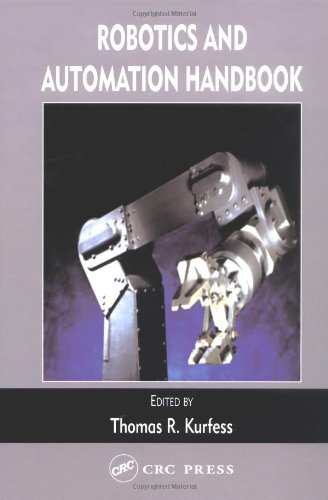

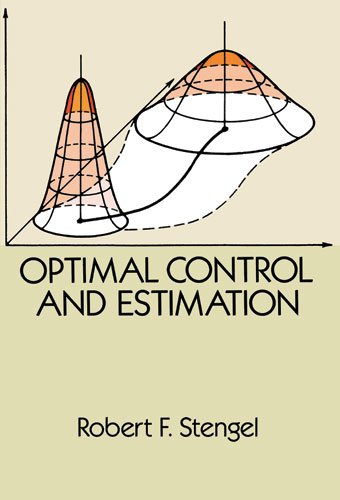
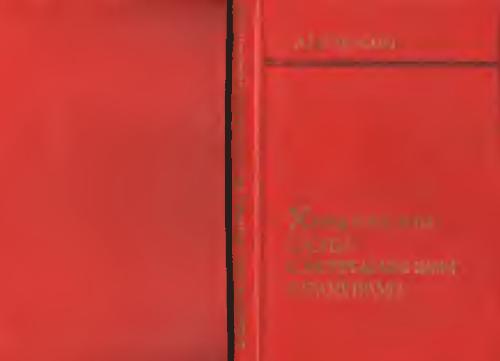
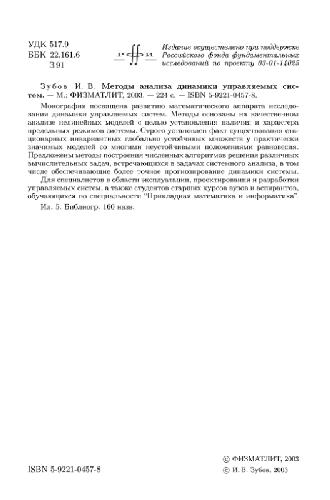

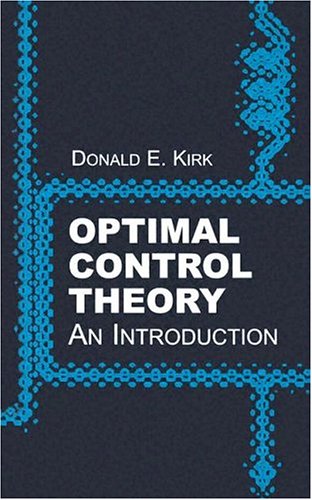
Reviews
There are no reviews yet.